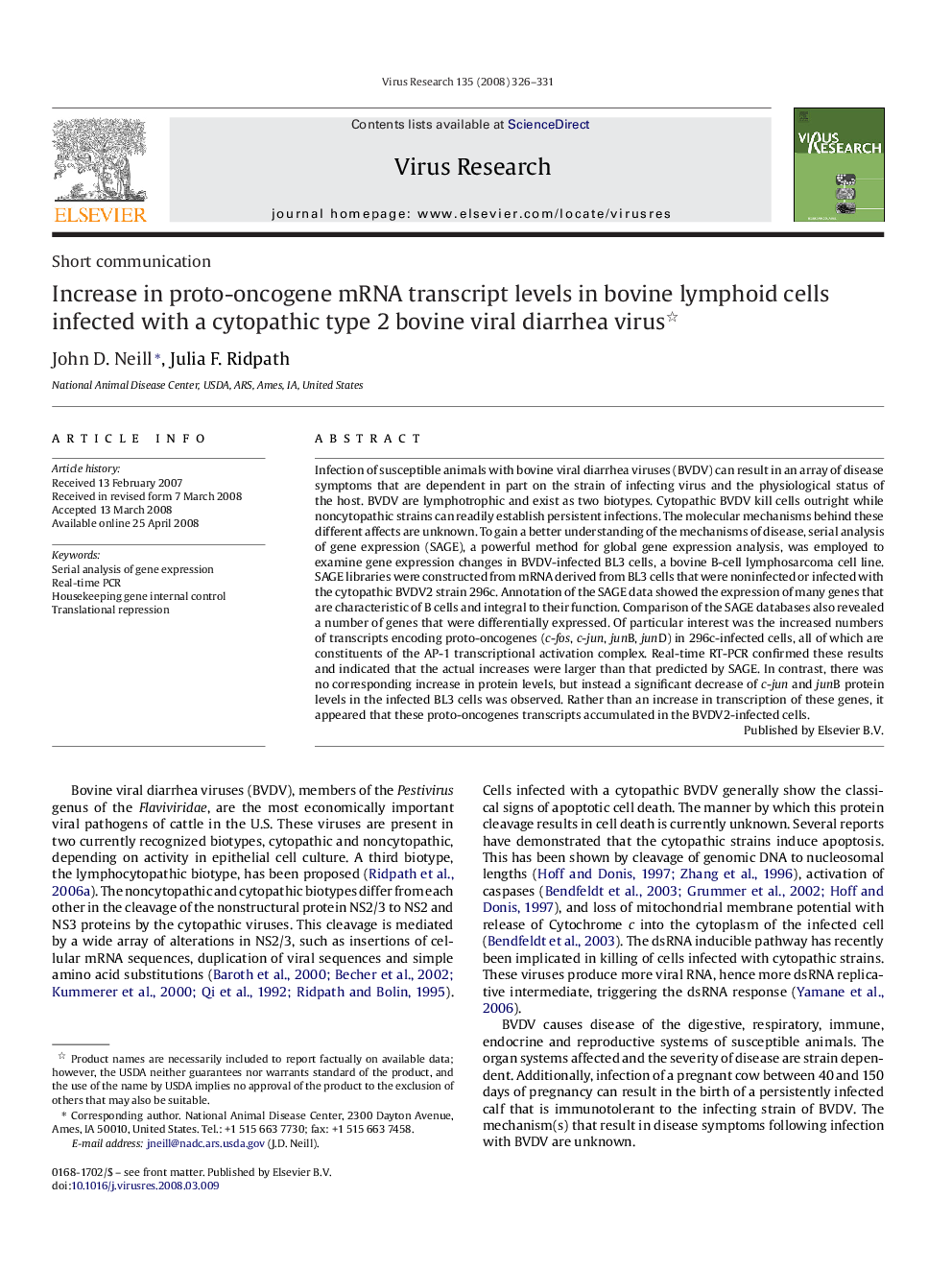| Article ID | Journal | Published Year | Pages | File Type |
|---|---|---|---|---|
| 3430103 | Virus Research | 2008 | 6 Pages |
Infection of susceptible animals with bovine viral diarrhea viruses (BVDV) can result in an array of disease symptoms that are dependent in part on the strain of infecting virus and the physiological status of the host. BVDV are lymphotrophic and exist as two biotypes. Cytopathic BVDV kill cells outright while noncytopathic strains can readily establish persistent infections. The molecular mechanisms behind these different affects are unknown. To gain a better understanding of the mechanisms of disease, serial analysis of gene expression (SAGE), a powerful method for global gene expression analysis, was employed to examine gene expression changes in BVDV-infected BL3 cells, a bovine B-cell lymphosarcoma cell line. SAGE libraries were constructed from mRNA derived from BL3 cells that were noninfected or infected with the cytopathic BVDV2 strain 296c. Annotation of the SAGE data showed the expression of many genes that are characteristic of B cells and integral to their function. Comparison of the SAGE databases also revealed a number of genes that were differentially expressed. Of particular interest was the increased numbers of transcripts encoding proto-oncogenes (c-fos, c-jun, junB, junD) in 296c-infected cells, all of which are constituents of the AP-1 transcriptional activation complex. Real-time RT-PCR confirmed these results and indicated that the actual increases were larger than that predicted by SAGE. In contrast, there was no corresponding increase in protein levels, but instead a significant decrease of c-jun and junB protein levels in the infected BL3 cells was observed. Rather than an increase in transcription of these genes, it appeared that these proto-oncogenes transcripts accumulated in the BVDV2-infected cells.
